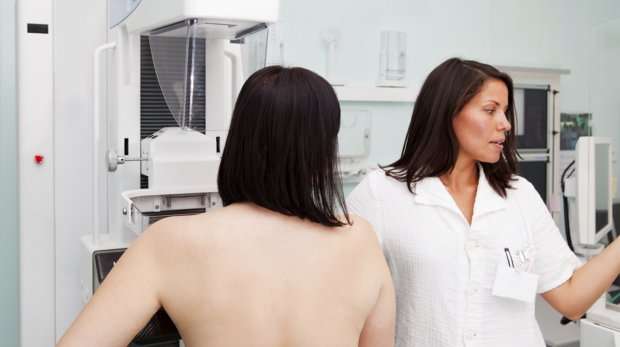The odds of recurrence of breast cancer in individual patients

Scientists of UT research institute MIRA have developed a system that maps out the odds of recurrence of breast cancer in individual patients. On the basis of information about the patient, the original tumour and the treatment used, they can accurately predict the odds of recurrence of breast cancer per year. The research has been published in the scientific journal Breast Cancer Research and Treatment. On this website, doctors can, together with the patient, easily calculate the odds of recurrence of the disease.
More and more women in the Netherlands have to face breast cancer. Due to early detection and better treatment, more and more of them are cured. A consequence of this, however, is that the group of women who have to regularly be checked for recurrence of the disease is growing. Up until 2012, women who were cured of breast cancer were checked every year for recurrence of the disease. Since 2012 the oncological guidelines prescribe that doctors have to choose an individualized approach, where the risk of recurrence of the disease in a specific patient has to determine the follow-up course of action. In practice this doesn't happen, because doctors simply do not know the 'recurrence risk' in individual patients.
Odds of recurrence
Researchers of the University of Twente have therefore developed a system, a so-called nomogram, that doctors can use together with patients to simply calculate the odds of recurrence of the disease themselves, on the basis of the age of the patient, the information on the original tumour and the treatment used. The system gives the odds of recurrence of the disease per year, including the uncertainty of the prediction.
To develop their system the researchers used the information of almost 40,000 breast cancer patients from the Netherlands Cancer Registry (NKR, Nederlandse Kankerregistratie), a unique database in which all information about the occurrence, survival and deaths of all instances of cancer in the Netherlands have been registered since 1989.
Follow-up
With this system, doctors have a tool they can use to help determine the best way to set up the follow-up for individual patients. The University of Twente will now get to work on providing doctors with concrete recommendations for planning subsequent check-ups. For patients with a very low risk, for example, it's not necessary to get a check-up every year, while others might have to get their check-up more often.
According to Joost Klaase, surgeon at the Medical Spectrum Twente (MST) who was involved with the research, the medical world has a need for the system. "The nomogram for risk of breast cancer recurrence gives us a tool to create a tailor-made follow-up for breast cancer patients: patients with a low risk of recurrence - by far the largest group - can be checked less often."
















